Master & Apprentice / London
Passing the gavel
Auctioneering is an exacting blend of salesmanship and performance art. So says Christie’s veteran auctioneer Hugh Edmeades as he brings his years of expertise to training Marlous Jens, a new recruit to the profession.
Marlous Jens stands at the wooden rostrum in the Lower Ryder Street Gallery and looks around. “Do I have 2,000?” she asks, projecting her voice to the back of the room. “Thank you, sir. Two-two? Two-four? Two-six?” Her right hand sweeps from one side to the other in front of her while her left hand – gavel clasped between the fingers – hovers above a patch of bare wood on the podium top where the varnish has been chipped and worn down by countless hammer blows.
The room in front of her is completely empty – except, that is, for Hugh Edmeades, the head of auctioneering at Christie’s. “You need to remember to look up at the camera as well,” he tells her, pointing to an inconspicuous lens at the back of the hall. “And at the phone banks on each side before you move on.” Jens nods her head and tries the exercise again, making a concerted effort to take these instructions on board.
Dutch-born Jens has just been selected as one of Christie’s next generation of auctioneers. She had her first audition last April when she was one of 44 hopefuls, all full-time employees at the auction house who had been invited to apply. Over the next year and a half, that number was whittled down in stages until finally she and just one other candidate were taken on. Both are young women, demonstrating the auction house’s eagerness to open up the field to both sexes and challenge the conventional perception of auctioneering as a male profession.
The position is not full-time – none of the auctioneers at Christie’s are – but 27-year-old Jens has become one of a select group of employees who can run sales throughout the year. “All the auctioneers, because they sometimes miss a couple of hours during the day, will then make up for that by working late,” she says. “It is a bit of a sacrifice but everyone loves it so they are willing to make that sacrifice.”
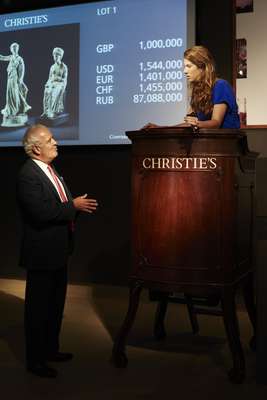
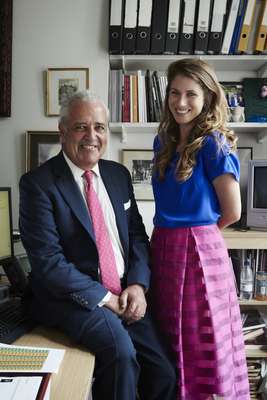
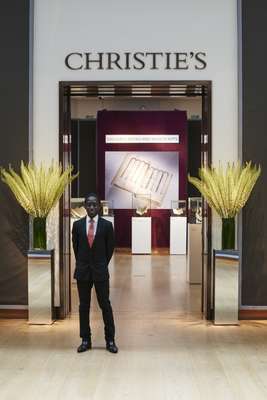
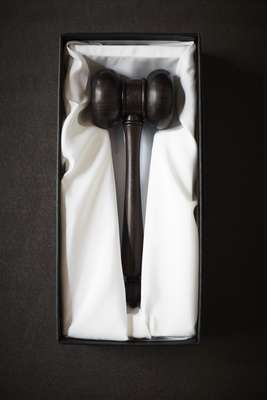
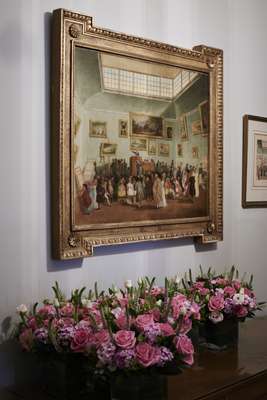
As the numbers suggest, the selection process is highly competitive. The candidates are first presented with the “bidding increments”, an unassuming sheet of paper that illustrates by how much an auctioneer should increase the asking price. The first lesson is to learn this by heart; it is the bedrock of the auctioneer’s trade. “I can’t teach them the numbers,” says Edmeades. “I can only teach them what to do with the numbers.”
After that he is looking for someone who is not frightened by the idea of standing up in front of a room full of people and performing, sometimes selling up to a lot a minute for two hours. “My main criterion is to find the best salesman and saleswoman because that, at the end of the day, is what we’re doing,” he says. “Anyone can get up there and call the numbers but it’s those with that X factor who can generate additional bids.”
The final test for the aspirants is to run a real sale at the auction house. Last month, Jens was responsible for a jewellery sale at Christie’s South Kensington gallery. “Watching the crowd at that sale, I could judge they actually enjoyed bidding to her,” says Edmeades. “That is important.”
Edmeades conducted his first Christie’s auction in August 1984 and has since conducted hundreds more. His vast experience made him the perfect person to run the company’s auctioneer-training and evaluation programme. Since 2008, he has been at the forefront of a plan to professionalise the role within the company.
Traditionally, it was the specialist – or head of sale – who would run the auction; but this was often ineffective. “As an auctioneer you have to be objective,” Jens says. “The head of sale is not always the best person because they are very emotionally attached to the auction.”
Moreover, while Christie’s is a historic auction house dating back to 1766 and the fundamentals of auctioneering are still much the same as they were back then, changes in the global art market are having an impact. “We used to sell predominantly to the trade: the antiques shops and art galleries,” says Edmeades. “Now at least 60 per cent of our lots go to private buyers. That means [auctioneering] has become much more about the entertainment value.” It is clearly adapting well: in July, Christie’s announced record half-year sales of £2.9bn (€4.1bn), up 8 per cent on the first six months of 2014.
Innovations in the auction business have also transformed the job. “Nowadays you have to worry about people watching from home online as well,” says Edmeades, gesturing towards the camera in the room, which since 2006 has beamed pictures around the world via the Christie’s Live platform. “We’re conscious the internet is a way of buying so we have to embrace it. An effective auctioneer is now someone who will have a relationship through the camera.”
The modern auctioneer is, then, more of a “game-show host” than before, according to Edmeades. There are many theatrical analogies: “It’s not just a verbal performance: it’s a visual performance, too. You need to use your hands and your body.” And while mastering the bidding increments is a tangible skill, a young aspiring auctioneer’s theatrical performance is constantly subjected to evaluation and improvement. “In a sense,” says Jens, “the training never stops because Hugh is always assessing us.”
Master
Hugh Edmeades
1956 Born in Portsmouth, UK
1978 Joined Christie’s as furniture specialist
1984 Conducted his first auction
1999 Became chairman of Christie’s South Kensington
2006 Appointed Christie’s international auctioneer
Apprentice
Marlous Jens
1988 Born in Geldrop, Netherlands
2009 Completed BA in business economics
2011 Masters in art business at Sotheby’s Institute of Art
2012 Joined Christie’s as intern
2014 Began Christie’s auctioneer training
2015 Completed her auctioneer training


